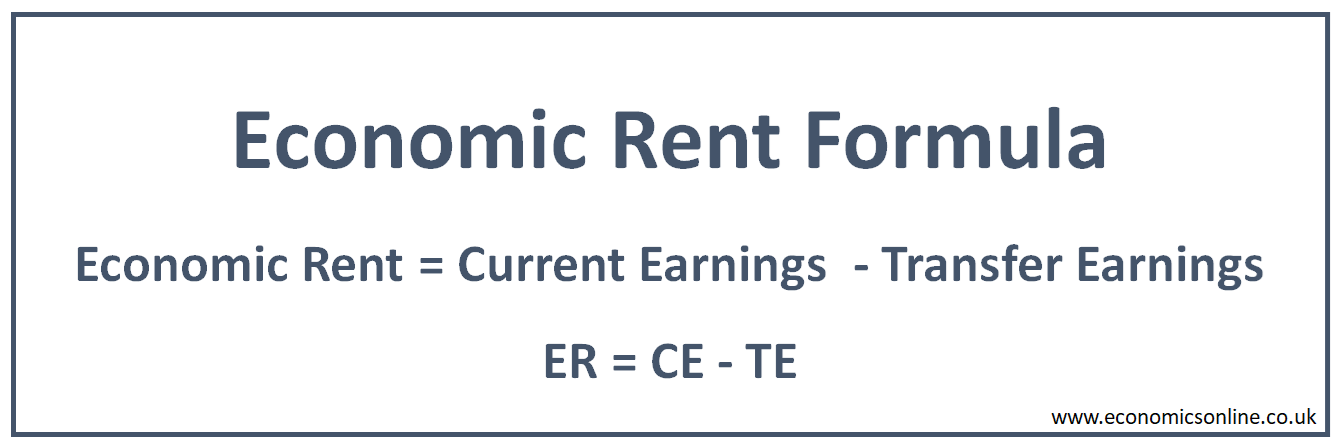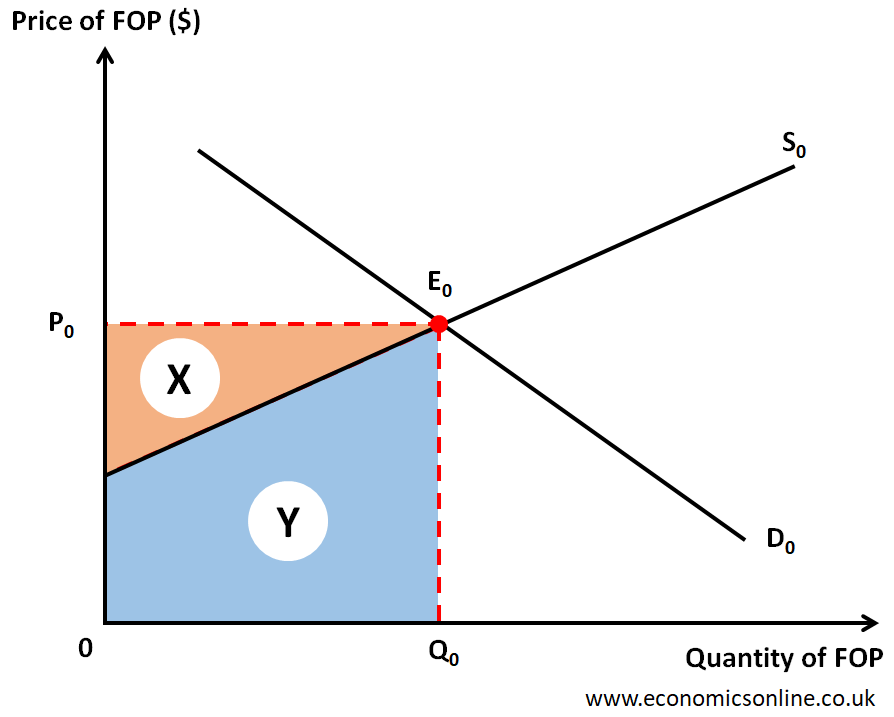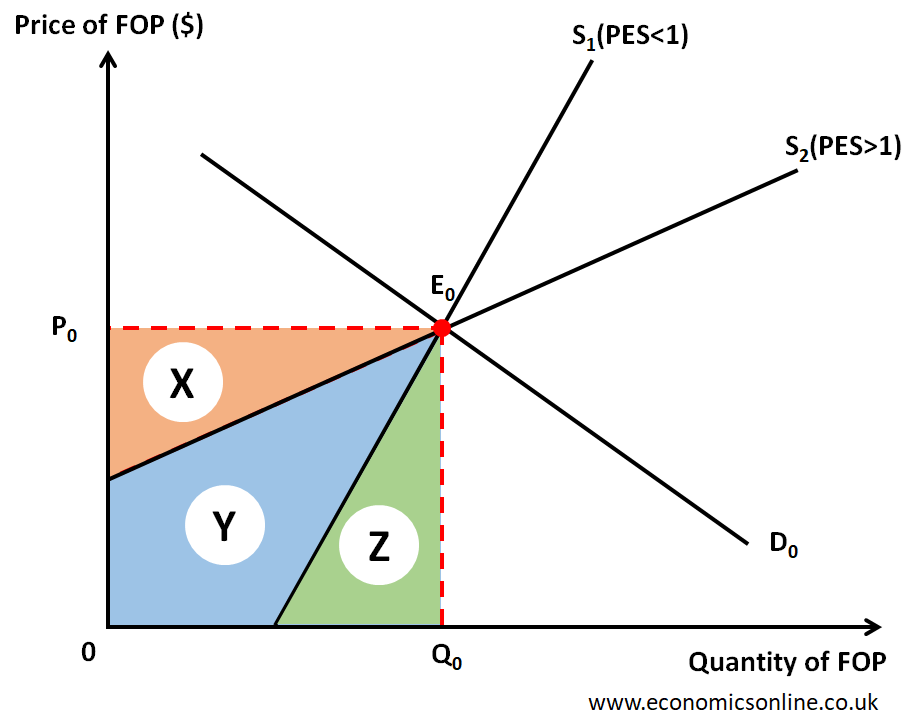
Photo by iMattSmart / Unsplash
Economic Rent Definition
Introduction
Firms need factors of production in order to produce goods and services. These factors of production are land, labour, capital and enterprise. These factors of production are rewarded with payments when used in production. Economic rent is one such payment.
Payments to Factors of Production
Payments made by firms to a factor of production can be of the following three types:
Current Earnings (CE)
Total earnings of a factor of production in its present use are called its current earnings. For example, if a worker is earning $500 a week in his present job, then his current earnings are $500 per week.
Current earnings of a factor of production are divided into two parts, which are called transfer earnings and economic rent. In fact, current earnings are the sum of transfer earnings and economic rent. Here is the formula:
Current Earnings = Transfer Earnings + Economic Rent
CE = TE + ER

Transfer Earnings (TE)
The minimum payment needed to keep a factor of production in its present use is called its transfer earnings. For example, if a worker is earning $500 a week in his present job, but could only earn $300 a week in her next best occupation, then her transfer earnings would be $300 per week.
Transfer earnings are a part of current earnings. It is opportunity cost of a factor of production, that is, what a factor of production could earn in its next best use.
A change in transfer earnings can affect the allocation of resources. For example, if the transfer earnings of a worker are increased from $300 a week to $600 a week because he can now earn $600 in its next best option, the worker will take the job paying $600 a week and leave the job of $500 a week. Economic theory says that, all other things being equal, if transfer earnings are greater than current earnings (TE>CE), a factor of production will leave the present role and go for the new job.
Economic Rent (ER)
The payment made to a factor of production over and above its transfer earnings is called its economic rent. It is the surplus income of a factor of production above its transfer earnings. For example, if a worker is earning $500 a week in his present job, but could only earn $300 a week in her next best occupation, then her transfer earnings would be $300 per week. In this case, her economic rent would be $200 a week, which she is receiving over and above her transfer earnings of $300.
Economic rent is the difference between current earnings and transfer earnings. Here is economic rent formula:
Economic Rent = Current Earnings - Transfer Earnings
ER = CE - TE

A change in economic rent does not affect the allocation of resources. For example, if the transfer earnings of a worker are increased from $300 a week, the worker will remain in his present job irrespective of the amount of economic rent he will receive.
Graph
Let us illustrate current earnings, transfer earnings and economic rent with the help of the following graph:

In the above graph, a market for a factor of production is shown. The quantity of factor of production (FOP) is taken on the horizontal axis (x-axis) and the price of FOP is taken on the vertical axis (Y-axis). This graph represents all factors of production and can be customised for any specific factor of production by changing the labels on the axes. For example, the vertical axis will be labelled with the wage if the diagram is used for labour, while the horizontal axis will have the quantity of labour.
Anyhow, D0 is the demand curve and S0 is the supply curve. The market equilibrium is at E0, P0 and Q0. P0 is the market price, and Q0 is the equilibrium quantity. In this graph,
Current Earnings = Area X + Area Y
Transfer Earnings = Area Y
Economic Rent = Area X
Economic Rent and Elasticity of Supply
Economic rent of a factor of production changes with a change in its price elasticity of supply. The following diagram illustrates this:

In the above diagram, S1 is a price-inelastic supply curve and S2 is price-elastic supply curve.
For inelastic supply curve S1 (PES<1),
Current Earnings = Area X + Area Y + Area Z
Transfer Earnings = Area Z
Economic Rent = Area X + Area Y
For elastic supply curve S2 (PES>1),
Current Earnings = Area X + Area Y + Area Z
Transfer Earnings = Area Y + Area Z
Economic Rent = Area X
Examples of Economic Rent
The following are some examples of economic rent for different factors of production:
Land
In economics, land means natural resources that are used to produce goods and services. The reward for land is called rent. For land, economic rent is the amount of rent which the land owner will get over and above its minimum reward in the next best use.
Labour
Labour means the physical and mental services provided by workers in the production of goods and services. The reward for labour is called wage. For labour, economic rent is the amount of wage that an employee receives over and above its minimum reward in the next best alternative job.
In the labour market, the concept of economic rent is considered as one reason for wage differentials among different occupations. For example, skilled workers earn higher wages than unskilled workers. Economic rent includes high salaries earned by star athletes as compared to an average working individual.
Enterprise
Enterprise combines other factors of production to produce goods and services. The reward for enterprise is called profit. The minimum economic profit needed to keep factors of production in present use is called normal profit which is the transfer earnings for enterprise. Any profit over and above normal profit is the economic rent for enterprise which is also called supernormal profit or abnormal profit.
Quasi Rent (QR)
A type of economic rent that can be earned in the short-run, but not in the long run is called quasi-rent.
For example, a firm has bought a piece of equipment which is so specialised that it has no alternative uses. It means that its transfer earnings are zero and all the payments received from the use of this equipment are economic rent. If this equipment is useful only in the short-run and has to be replaced in the long run, then its economic rent will be called quasi rent.
Conclusion
In conclusion, the economists define economic rent as an extra income earned by a factor of production over and above its transfer earnings. Economic rent is the part of current earnings of a factor of production. The presence of economic rent means that the factor of production is earning more than the minimum acceptable amount in its present use.


